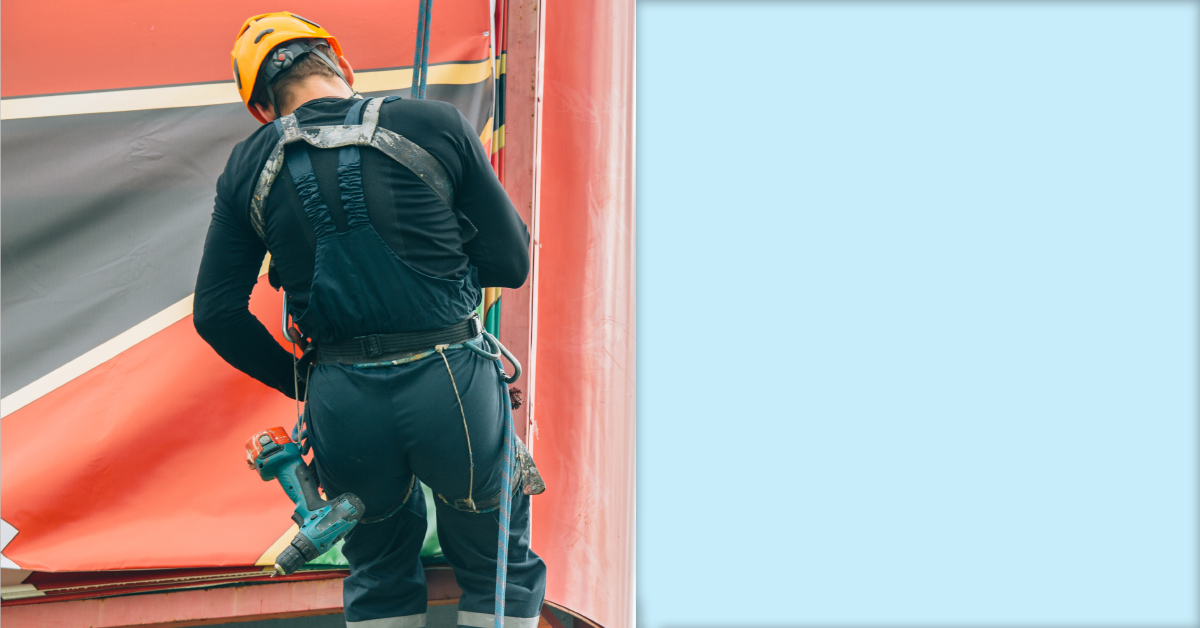
ByMartin Supply •
Into Thin Air
The heavy breathing says you are not so young anymore when you haul yourself and tools over the top of the structure’s steel ladder and step onto a 30-foot-high catwalk, last night’s blue-grass music still ringing in your ears.
Clipping a lanyard to the rat line for fall protection, you start to the far end of the board to remove rods from the vinyl. An unseen mash hammer left lying on the walkway by the last crew catches your foot in mid-step. The chill gray overcast of a February sky registers through a stumble over the edge in a fall certain to end with breaking bones on a roof section protruding under this end of the sign from the building next door. Fortunately, the surface is twelve feet below the catwalk and you are saved today. New technology fall protection halts your fall at 11 feet.
HAGL (“haggle”), or Height Above Ground Level, and Fall Distance Calculation determine whether a sign operations worker will impact the earth or other surface in a fall event or be caught in the embrace of a full-body harness with life intact. Traditionally, a Personal Fall Arrest System (PFAS) comprises a 6-foot shock-absorbing lanyard and full-body harness attached to a cable line at foot level on the board’s platform and requires nearly twenty feet of HAGL for safety. How many times do our climbers work on boards with shorter fall distances? The answer is about 25 percent – 35 percent of the time, more in some markets.
Today we train and work on new technology — Self-Retracting Devices (SRD) that arrest a fall in 26 inches instead of 9 feet like older 6-foot lanyards, allowing work at HAGLs as low as 11 feet when tied off at foot level to the horizontal safety line on the catwalk.
Shorter HAGLs – less than 11 feet – mean board workers must tie off at a point overhead to shorten the fall distance calculation of the PFAS safety equipment. In the past, this meant using a cumbersome non-standard 16-foot, 48-pound hook anchor device on the top of the poster or bulletin, the sheer weight and length of the anchor pole creating its own hazard.
A combination of SRD with a light-weight, nine-pound poster/bulletin board anchor (product release date March 15, 2016) allows climbers to work protected at HAGLs of four feet or less. Not only is this equipment the right thing to do for board workers, it also satisfies OSHA fall protection requirements.
As with airplanes, altitude and equipment are your friends. Be aware of the HAGL on every climb, and know the fall distance calculations of your anchor point and lanyard/SRD.
Yes, you were saved today. Enjoy the music.
This article originally appeared in the Outdoor Advertising Association of America newsletter in March 2016.

Comments for this post are closed.